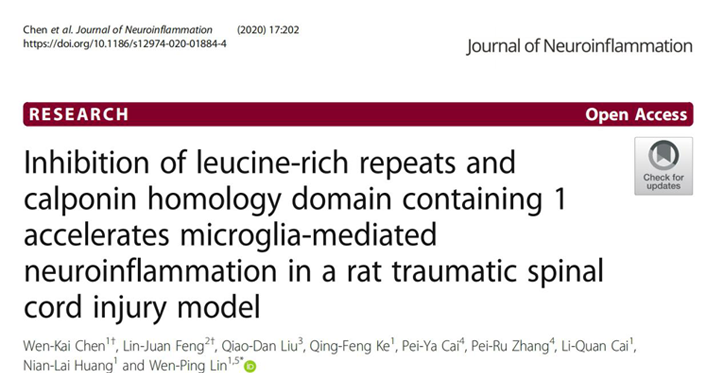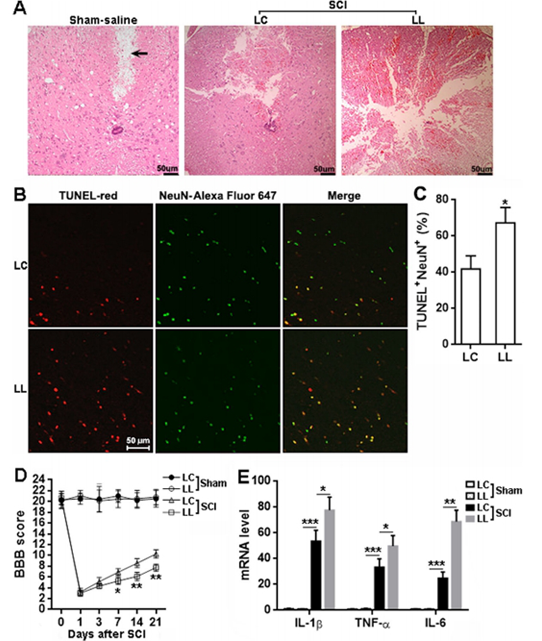Location:Home > Application > [Frontier Research] New method of spinal cord injury treatment
[Frontier Research] New method of spinal cord injury treatment
Mechanical injury of spinal cord tissue causes primary injury, and secondary neuromuscular response occurs in SCI after primary injury, mediating additional extensive nerve injury. Controlling harmful acute nerve injury can be used as a therapeutic strategy to inhibit injury and promote functional recovery. Microglia play a vital role in secondary injury after spinal cord injury. In the acute phase, activated microglia can produce neurotoxic pro-inflammatory cytokines, such as TNF-α, IL-1 cell killing factor and IL-6. therefore,.Carefully adjusting the functions of microglia to minimize their harmful effects and exert their neuroprotective effects is essential to promote the recovery of the nervous system.



Ubigene provides LRCH1 knockout or knockdown services:
The editing efficiency of CRISPR-U™ system, exclusively developed by Ubigene, is 10 times higher than that of traditional methods. We have successfully performed gene knockout in over 100 types of cell lines, including various brain and nervous system cell lines, such as Human Neuroblastoma Cell Line SK-N-SH, Rat Glioblastoma Cell Line C6, Mouse Hippocampal Neuron Cell Line HT22, etc. Contact us now to learn more about your research related services!
[Frontier Research] New method of spinal cord injury treatment
Mechanical injury of spinal cord tissue causes primary injury, and secondary neuromuscular response occurs in SCI after primary injury, mediating additional extensive nerve injury. Controlling harmful acute nerve injury can be used as a therapeutic strategy to inhibit injury and promote functional recovery. Microglia play a vital role in secondary injury after spinal cord injury. In the acute phase, activated microglia can produce neurotoxic pro-inflammatory cytokines, such as TNF-α, IL-1 cell killing factor and IL-6. therefore,.Carefully adjusting the functions of microglia to minimize their harmful effects and exert their neuroprotective effects is essential to promote the recovery of the nervous system.



Ubigene provides LRCH1 knockout or knockdown services:
The editing efficiency of CRISPR-U™ system, exclusively developed by Ubigene, is 10 times higher than that of traditional methods. We have successfully performed gene knockout in over 100 types of cell lines, including various brain and nervous system cell lines, such as Human Neuroblastoma Cell Line SK-N-SH, Rat Glioblastoma Cell Line C6, Mouse Hippocampal Neuron Cell Line HT22, etc. Contact us now to learn more about your research related services!
